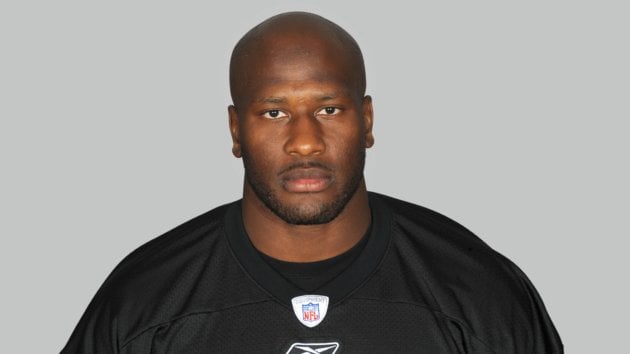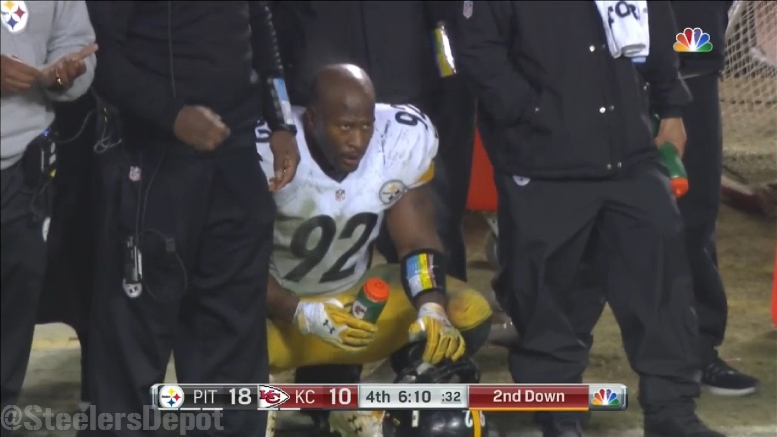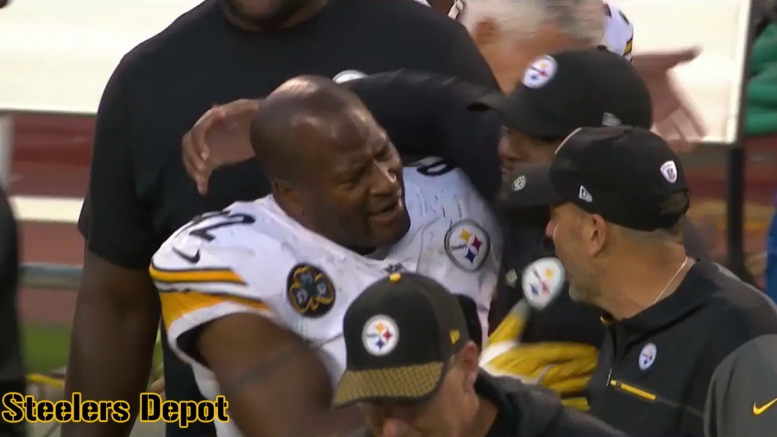The Pittsburgh Steelers tried to make clear during the offseason that, despite the fact that he may have played his way into a starting role amidst adverse circumstances the team was dealing with, James Harrison will not be a full-time player during the 2015 season.
And he won’t be. But if the first game of the season is any indication, he also will not be so shackled as some comments from coaches earlier in the year might have portrayed. 25 was the number thrown about with respect to the number of snaps he was expected to average per game.
Of course, it was a given that there would be no hard and fast rule about how much the 37-year-old pass rusher would be allowed to play. He would not be pulled mid-series once he hit 25 snaps, as though he were a pitcher subject to a pitch count for his own good.
So it should not be surprising to learn that Harrison logged better than 40 percent more than his 25-snap target, playing on defense for 36 snaps through the course of the night.
It may be somewhat of a surprise, however, that those 36 snaps accounted for the majority of the team’s defensive snaps, and was also the most logged by any of the team’s four linebackers. Jarvis Jones, who is the starter at Harrison’s right outside linebacker position, logged 26 snaps. Rookie Bud Dupree also logged 26, while Arthur Moats had just 20.
While the Steelers generally rotated the linebacker pairs in and out based on series, that was not universally the case. Often the coaches would substitute one set for another in the middle of a series for a variety of reasons, generally to keep the legs of the pass rush threat fresh.
Harrison logged 14 of his snaps in the fourth quarter, during two extended drives, with Jones subbing in for him during a three-play span, when the defense forced a three-and-out, which was where the snap counts of the two really separated.
On a positive note, both Harrison and Jones played fairly well, though neither was able to make an impactful play on the game. This, of course, was largely a byproduct of the Patriots’ quick passing game, as well as the secondary’s inability to produce the coverage necessary to buy the extra time to get home.
Both right outside linebackers did fare well against Nate Solder, though the edge may go to Jones, whose pressure came a bit more consistently. Jones also had a strong day against the run, with his issues coming up when he is put in space, which has been the case over the course of his first two seasons.
It is difficult to draw much of value out of observations from a single game out of a long season, but initial impressions seem to indicate that the pass rushing rotation has the potential to prove effective, especially against lesser quarterbacks and offenses. That, and the fact that James Harrison is not concerned about your snap counts.






